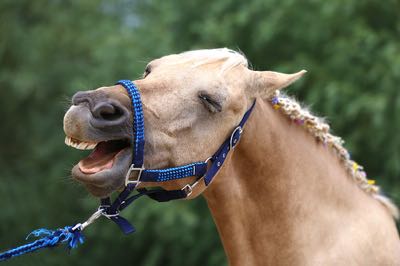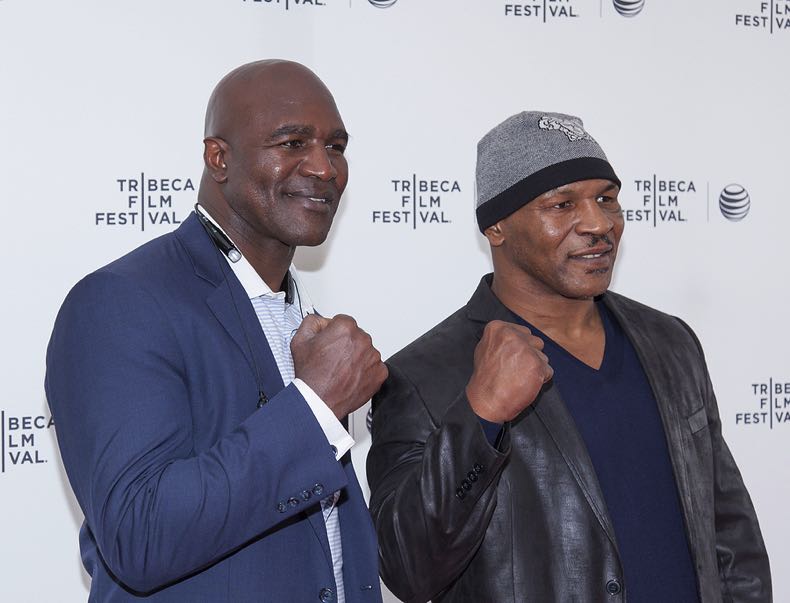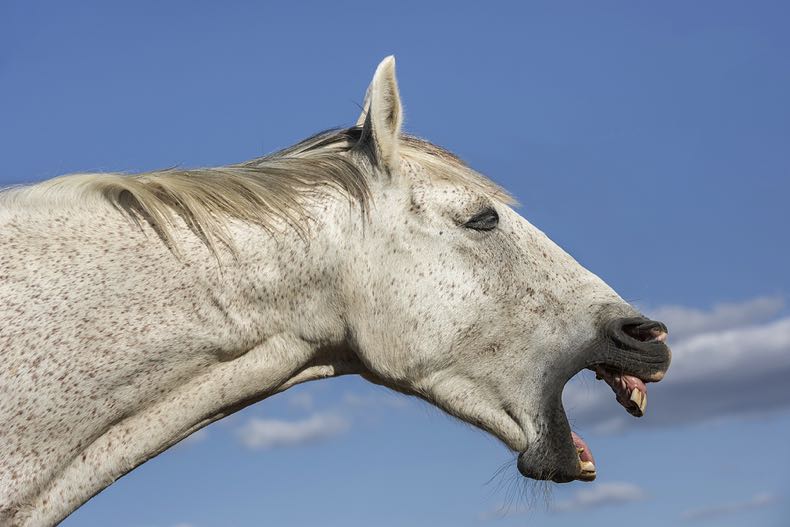 There are many factors that contribute to the excitement and drama provided by the wonderful world of sport. From the moments of individual brilliance or sublime moves of team sports such as rugby or football, to the sheer speed of Formula 1 or horse racing, and on to the head-to-head combat of boxing and the UFC. This wide range of thrills and spills is all part of what makes sport in all its incarnations such a popular spectator activity all around the world.
There are many factors that contribute to the excitement and drama provided by the wonderful world of sport. From the moments of individual brilliance or sublime moves of team sports such as rugby or football, to the sheer speed of Formula 1 or horse racing, and on to the head-to-head combat of boxing and the UFC. This wide range of thrills and spills is all part of what makes sport in all its incarnations such a popular spectator activity all around the world.
As with most things in life, sporting spectators and participants do generally have to endure at least a little rough to go with the smooth. As in any activity where rewards are on offer to the winner, the potential for questionable behaviour is always likely to exist. Be it a blatant shirt pull on a striker who is clean through on goal, deliberately keeping a rival boxed in during a horse race, or a sly dig around the back of the head in a boxing bout, if there’s a potential advantage to be had through the employment of underhand tactics, there is always likely to be an individual of dubious enough character willing to carry out such tactics. And, really, that is all also part and parcel of the entertainment, sparking endless debates around the TV, with the guilty parties generally not being viewed too harshly.
A Bite Too Far
What does tend to be viewed harshly though – and indeed we can’t think of a single sporting pursuit in which it is accepted – is the use of teeth. Whilst, depending on the exact nature of the sport, a degree of physical contact is always to be expected; be that a shoulder barge, pushing or pulling, or even a punch or kick in the realm of combat sports, what is universally accepted – no matter what the sport – is that participants can go into battle safe in the knowledge that their opponents are not permitted to take a chunk out of them with their gnashers.
But, does being prohibited in every sport under the sun prevent it from happening? Is sport a biting-free zone? As we shall see, it most certainly is not. For, whilst being a mercifully rare occurrence, competitors do on occasion attempt to take matters into their own teeth, be they human, or as we will focus more closely upon here, equine.
Shark-Like Sportsmen & Nibbling Nags

Tyson & Holyfield (vonora / Bigstockphoto.com)
When thinking of biting incidents within the sporting world, horse racing most likely wouldn’t be the first activity to come to mind, with these toothy misdemeanours having made a far bigger splash in other fields. Be it Mike Tyson attempting to take a chunk of Evander Holyfield’s ear in 1997, Kash Ali developing a taste for David Price’s Torso in 2019, or that most notorious of nibblers Luis Suarez attacking Otman Bakkal, Branislav Ivanovic, or Giorgio Chiellini, biting incidents invariably hit the headlines when they occur. The instigators are generally universally condemned and punished too. Suarez, for example, was banned for a total of 26 games for his repeated grazing on opposition defenders.
There has been no shortage of human culprits in the annals of crimes committed with choppers then. But what about those beautiful beasts who provide the most thrilling form of equine entertainment on the planet? Is the noble horse also prone to taking a teeth-first approach in the midst of a sporting contest? As it turns out, they most certainly are.
Fight Fire with… Teeth
Our first entry on this list of overzealous equine athletes comes in the shape of a horse called Whereshetoldmetogo, who displayed his previously unseen vicious streak in the Gallant Bob Stakes at the Parx racecourse in the USA in 2018. A thrilling three-way battle ensued as the runners turned into the straight that day, with Whereshetoldmetogo and Firenze Fire ultimately seeing off Seven Trumpets to fight it out to the line.
It was a contest that Firenze Fire slowly but surely won, beginning to pull clear in the closing stages. However, whilst Whereshetoldmetogo may have been beaten, he wasn’t done with quite yet, getting in one last dig at Firenze Fire as they approached the line.
Firenze Bites Back
Considering there are so few biting-related incidents to have hit the horse racing headlines over the years, it is pretty remarkable that our friend Firenze Fire has been involved in two such tales. However, three years on from being on the wrong end of Whereshetoldmetogo’s uninvited attention, this time it was Firenze Fire dishing out the toothy treatment in the Grade 1 Forego Stakes at Saratoga.
Again involved in a ding-dong head-to-head battle in the closing stages – and still seemingly in with every chance – Firenze Fire appeared to lose interest in reaching the winning post first and instead focussed his attentions on the muzzle of rival Yaupon. Was this a mere coincidence? Did Firenze Fire mistake the unfortunate Yaupon for his previous assailant? We’ll never know. If only horses could talk!
Snappy Valley & Maisons-Labite
Of course, when opting to take their teeth to a rival in the midst of battle, a horse is faced with one of two choices: do they focus their savagery on their fellow equine performer or instead target the man or woman doing the steering? As if their job wasn’t perilous enough, there have been occasions when it has been the jockey who has apparently tickled the tastebuds of our errant equines. Again, these horse-versus-man biting attacks are extremely rare occurrences, but there have been a couple of incidents to have made the news in recent years.
We head to the Happy Valley racetrack at Hong Kong for the first of these in 2018, where Italian rider, Umberto Rispoli, felt the wrath of a horse by the name of Mister Monte. Unlike the earlier incidents, this attack did not occur between two rivals fighting out the finish, with Mister Monte and Rispoli’s mount Patriot Hero merely cruising towards the line to finish a fairly undramatic fifth and sixth respectively. Such an anti-climatic conclusion didn’t seem to sit well with Mister Monte though who opted to spice things up a bit with a late thrust of the incisors towards the unsuspecting Rispoli.
Unfortunate Umberto was thankfully unscathed by the incident and may take some solace from the fact that he is not alone in having drawn the ire of a rival in the home straight. Switching continents to Europe, and moving forwards just one year, another recent ravaging occurred at the French track of Maisons-Laffitte in 2019. Sent off as the 3/5 favourite that day, Palomba appeared to be losing the argument with Lucky Lycra deep inside the final furlong but made one last effort to get his head home in front for favourite backers, when attempting to unship Lucky Lycra’s rider Francois-Xavier Bertras.
Why Do They Do It?

Horses do indeed bite. The question as to exactly why they do it is, however, possibly the most difficult to answer. Even with the ability to speak, the likes of Suarez, Tyson and Ali have been unable to articulate just what it is that brings out their rabid side in the heat of battle. In the absence of a horse being able to explain their actions in a post-race interview, all we can really do is hypothesise by taking a look at the various reasons horses are known to display biting behaviour in the natural world.
- Play – At the more friendly end of the spectrum, we have biting as a form of play. Young horses in particular are known to use nibbling as a playful sign of affection or even as a means of communication.
- Grooming – Related to the above, the teeth are an essential tool when grooming another horse, with hooves being particularly ill-suited to the task.
- Illness/Discomfort – Just like humans, horses are likely to become more irritable than usual when unwell or in some form of discomfort, which may well manifest itself in an aggressive act such as biting.
- Protecting Territory – Being herd animals, horses aren’t as territorial as some other species. They do, however, still enjoy a degree of personal space, and therefore may react badly should they perceive this space is being intruded upon.
- Anger – Then, of course, they may simply be angry, an emotion that occurs throughout the natural world, without it always being easy to determine the exact root of the anger.
When looking at the above biting motives, it would seem that the protection of territory may be the best fit, at least in those incidences where the runners have come quite close together in the latter stages of a race. Some form of discomfort due to a slipped saddle also can’t be ruled out entirely, but in none of the above examples was such a mishap reported. Play seems more of an unlikely explanation, whilst it certainly seems unlikely that the biters were acting in a grooming manner, and merely attempting to smarten up the mane of their victims.
Dental Discipline: Biting Rules & Penalties

If a race is close, a horse may be demoted for biting
Whilst being an infrequently witnessed element of the sport, it is still a little surprising that there is no specific mention of biting within the official rule books of British, Irish, American, French, Australian or Hong Kong racing. Does this mean that racing is essentially a biting-free space for all? Well, not quite. For whilst biting is not directly referred to, it does seem reasonable to assume that this act falls into the realm of two types of behaviour which are dealt with in the various rule books – those of interference and intimidation.
Interference & Intimidation Category
The majority of the time interference or intimidation refers to cutting across the path of another runner, or perhaps excessive barging of a rival – both of which could be said to be less aggressive, interfering, or intimidating actions than that of biting. Indeed, when biting incidents have been investigated by those in charge of policing the sport, this improper use of the mouth has been dealt with in much the same manner as the other actions which fall into the interference and intimidation category.
How Biting is Punished
How is biting punished within the sport of racing? Well, it depends. And, what it depends upon is whether or not the biting incident is deemed to have affected the result of the race, i.e. has a horse improved their finishing position through the act of biting a rival? With that in mind, despite the antics displayed in our examples above, no action was taken by the race-day stewards in any of those incidents, as in each case the aggressor finished behind the victim, and therefore could not be said to have improved their finishing position.
Examined on a Case by Case Basis
For an example of a result being amended due to a biting incident, we have to go back to Churchill Downs in 2012. Heading into the deep stretch – as they like to say stateside – horses by the name of Chilled and Zimmer were in the frame for the top spot in what was a real head-to-head battle. Chilled ultimately prevailed by a mere nose in a photo finish that day, but not before attempting to savage Zimmer close to the line. A stewards enquiry duly ensued and, given that narrow margin of victory, the officials came to the reasonable assumption that Zimmer may well have won the race but for the (less-than-relaxed) actions of Chilled. Citing “intimidation” as the reason, Zimmer was awarded the race, with Chilled being demoted to second place.
That Chilled versus Zimmer case really serves as an example of what punters should expect to occur in the instance of a horse biting during a race, wherever it takes place in the world. In other words, should the biter beat the bitten, and the winning margin is particularly small, it is extremely likely that the placings will be reversed following a stewards enquiry. Whilst in the instance that the victim beats the aggressor, very little will happen, at least in terms of immediate actions on the day.
Biting: Further Interventions
Whilst occurring only very rarely, and even less frequently affecting the result of a race to such an extent that the stewards alter the placings, biting is nevertheless an act that has no real place in the sport. As such, it is not unusual for additional actions to be taken by owners, trainers, or indeed governing bodies in an effort to eradicate biting on the racecourse, with the following being three of the more high-profile cases:
Arcadian Heights
Talented enough to win the Ascot Gold Cup, Arcadian Heights was also temperamental enough to aim a bite at anything in the vicinity. Unable to curb these tendencies the star stayer spent much of his career racing in a muzzle.
Marmelo
Generally well behaved throughout his career, this Hughie Morrison-trained runner blotted his copybook on his big day out in the Melbourne Cup when ravaging rival Avilus in the early stages. Ultimately finishing a gallant second to Cross Counter, the horse was not deemed to have improved his finishing position and therefore wasn’t punished on the day.
Australian officials did, however, look dimly upon the incident and announced that Marmelo would only be allowed to race in the country again if the owners could convince a vet of his mental wellbeing before the race. Quite what that assessment would have amounted to will never be known, as Marmelo avoided racing on Australian soil throughout the remainder of his career.
Bartholomeu Dias
Lastly, we have poor old Bartholomeu Dias. A beacon of good behaviour in his first six starts, a screw then came loose in the final furlong of his sixth start, when the colt opted to nibble the neck of Dr Richard Kimble in the closing stages.
In an effort to avoid such aggressive acts in the future Bartholomeu Dias was promptly sent for a gelding operation. Surely the cruellest bite of them all, but it did at least seem to do the trick, as Bartholomeu Dias went on to race a further 16 times, and was impeccably well behaved in each and every one of those outings. Well, you would be, wouldn’t you!
